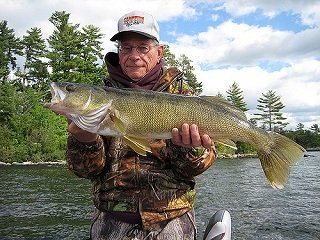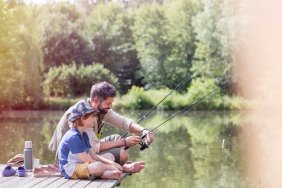 Walleye are one of the most popular gamefish in the water, and for good reason. Large walleye are exciting to catch and the fish’s meat is one of the most delicious you’ll ever find, especially when fried. My love for fried walleye aside, the tackle used to reel in these coldwater fish will vary greatly on your technique. While I’ve touched briefly upon the tackle needed for walleye fishing in a past article, today I want to dig a little deeper and highlight the specific tackle you’ll need for the various tactics associated with fishing for walleye. Keep reading to learn more!
Walleye are one of the most popular gamefish in the water, and for good reason. Large walleye are exciting to catch and the fish’s meat is one of the most delicious you’ll ever find, especially when fried. My love for fried walleye aside, the tackle used to reel in these coldwater fish will vary greatly on your technique. While I’ve touched briefly upon the tackle needed for walleye fishing in a past article, today I want to dig a little deeper and highlight the specific tackle you’ll need for the various tactics associated with fishing for walleye. Keep reading to learn more!
Most seasoned walleye anglers, along with those who’ve done their homework, will take a few different setups when they hit the water for walleye. This assures that, no matter the situation, you’ll at least be prepared to use different techniques to capitalize on changing conditions. Rods are in integral part of such preparation, as different lengths and actions will suit specific tactics. Anglers interested in working with lures or bait rigs 1/8 ounce or heavier will want to use a medium action spinning rod, around six feet, with a fast action. This is a good all-around length and action for walleye. Those casting smaller jigs (3/8 to 1/16-oz range), or even those using live bait, will be better off with a light to medium-light spinning rod around 6 ½ feet, with a fast-action. The whip of a rod like this on the back cast will help launch those smaller baits a lot further. Casting rods have their own roles with walleye, as well, and those casting or trolling with larger crankbaits or bait rigs will do well with a 6 to 6 ½-foot medium rod, with a fast tip. This rod has a stronger backbone than spinning rods and is well-equipped to be used with larger baits.
If you haven’t noticed, the rods above tend to include a soft tip. This is because walleye are infamous for being sneaky nibblers, and the added sensitivity will help you feel those soft bites. A rod made of quality graphite, or a cork grip, will also make it easier to feel those bites as well, as they transmit vibrations exceedingly well.
Choosing a reel is a bit tricky, as you really want one that balances nicely with the rod it’ll be paired with. You don’t want the weight to shift too much towards the front or back. Any spinning reel you go with should possess a front-mounted drag system, a strong, reliable bail, and a spare spool so you can keep two types of line on hand. Deciding on a baitcast reel involves a similar process, as you’ll want to make sure your selected model possesses a few features conducive to walleye fishing. For instance, you’ll want resistance against backlash, which means finding models with a quality set of centrifugal or magnetic brakes. You probably won’t need a high gear ratio, so don’t let that limit your decision.
Since walleye can be a little on the timid side, choosing the right line is an important factor. Try to stick with clear mono or fluorocarbon, especially in clearer waters. You’ll also want to go with the lightest line you can get away with, as this will help you cast further. Usually, 8 to 10-pound is fine, but you can go heavier, or even go with a thin braid, if you’re fishing around cover or structure.
As with most fish species, walleye fishing requires a little bit of preparation. It helps to have a few different setups on hand, just in case you have to switch presentations or tactics on the fly. Sometimes the difference in a good day on the water and a bad one is planning ahead for any possibility. While there are many factors out of our control—weather, fish habits, etc—taking measures to boost your chances never hurts.








